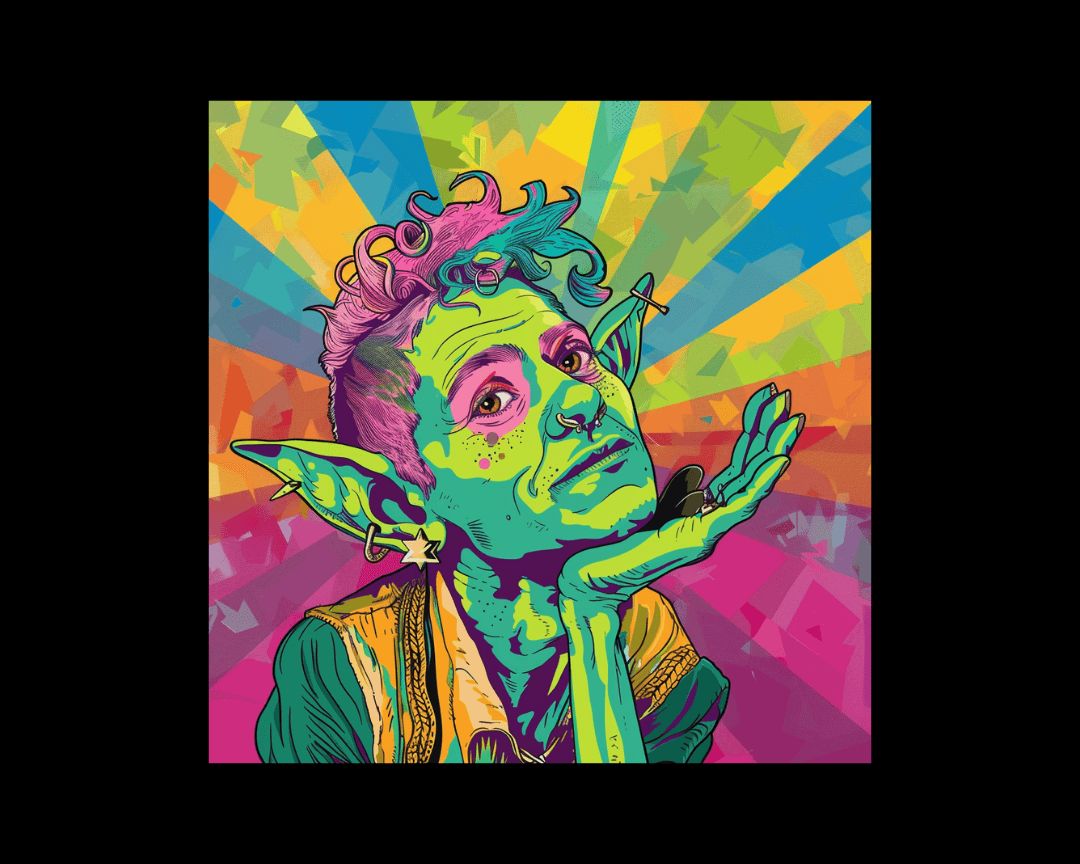Forever a Fantasy Reader
As a child, I was shy. That’s probably an understatement - I was more of a hermit. My mom couldn’t drop me off at a friend’s birthday party without...
-3.png)
The fantasy genre commands nearly 25% of all fiction sales, yet many writers struggle with a fundamental question: should their magical story unfold in an entirely fictional world or intrude into our familiar reality? This choice between high fantasy and low fantasy isn't just about setting—it determines your story's scope, stakes, and reader experience.
Understanding these distinctions helps writers make strategic decisions about worldbuilding, character development, and thematic exploration. The most successful fantasy authors don't choose randomly between approaches; they select the framework that best serves their specific story goals.
High fantasy transports readers to completely fictional secondary worlds with their own rules, histories, and magical systems. These stories typically feature epic conflicts, mythological creatures, and stakes that affect entire civilizations. Think Tolkien's Middle-earth or Brandon Sanderson's Cosmere universe—worlds that exist independently of our reality.
Low fantasy grounds magical elements within our recognizable world, either hidden beneath the surface or openly integrated into contemporary or historical settings. These stories often focus on personal stakes rather than world-ending threats, exploring how magic affects individual lives rather than entire kingdoms.
The distinction isn't about quality or complexity—both approaches can create equally sophisticated narratives. Rather, it's about where you place your story's magical foundation and how that choice shapes every other element.
Modern high fantasy has evolved far beyond Tolkien's medieval Europe analogs. Today's most successful authors create intricate magical systems with consistent rules and far-reaching consequences.
Brandon Sanderson exemplifies contemporary high fantasy's systematic approach. His Stormlight Archive series creates the world of Roshar, complete with unique ecology, multiple magic systems, and complex political structures. Sanderson's "First Law of Magic" states that an author's ability to solve conflict with magic is directly proportional to how well the reader understands that magic. This principle drives his detailed worldbuilding.
In The Way of Kings, Sanderson doesn't just create magical powers—he establishes how Stormlight works, why some people can use it, and what limitations govern its application. This systematic approach allows for spectacular magical battles while maintaining narrative tension through clearly established rules.
George R.R. Martin's A Song of Ice and Fire demonstrates how high fantasy can subvert traditional expectations while maintaining the genre's essential elements. Westeros functions as a secondary world with its own history, but Martin grounds magical elements in political realism and moral ambiguity. Dragons exist, but they're weapons of war with practical limitations rather than wish-fulfillment devices.
N.K. Jemisin's Broken Earth trilogy pushes high fantasy boundaries by creating a world where geological catastrophes shape civilization. Her magic system—orogeny—directly relates to seismic activity, creating a fantasy world that feels scientifically plausible while addressing real-world themes about oppression and environmental destruction.
Low fantasy's power lies in making the impossible feel plausible within familiar contexts. These stories often explore what magic reveals about human nature rather than focusing on magical spectacle.
Neil Gaiman masters this approach in works like American Gods, where ancient deities struggle for relevance in modern America. The story takes place in recognizable locations—roadside diners, tourist attractions, small towns—but reveals hidden magical layers beneath everyday surfaces. Gaiman's genius lies in making mythology feel both ancient and contemporary.
Jim Butcher's Dresden Files exemplifies urban fantasy's approach to low fantasy. Harry Dresden works as a wizard detective in modern Chicago, dealing with supernatural crimes while navigating mundane concerns like paying rent and dealing with bureaucracy. The series succeeds because it treats magic as another profession with its own rules, ethics, and practical problems.
Erin Morgenstern's The Ten Thousand Doors of January demonstrates how low fantasy can blend historical and contemporary elements. Set primarily in early 1900s Vermont, the story reveals doorways to other worlds hidden within our own reality. The magic feels intimate and personal rather than world-shaking, focusing on one young woman's discovery of her heritage and power.
Mexican Gothic by Silvia Moreno-Garcia shows how low fantasy can address social issues through supernatural metaphors. Set in 1950s Mexico, the story uses gothic horror elements to explore colonialism, racism, and patriarchal oppression. The supernatural elements feel inseparable from the historical and cultural context.
Contemporary fantasy increasingly blends high and low fantasy elements, creating stories that defy easy categorization.
Holly Black's Folk of the Air series begins in the human world but primarily takes place in the faerie realm. While technically high fantasy due to its secondary world setting, it maintains low fantasy's focus on personal stakes and character development. The political intrigue feels more like high school drama elevated to deadly stakes rather than traditional epic fantasy.
V.E. Schwab demonstrates versatility by working successfully in both modes. Her Shades of Magic series creates a high fantasy multiverse with multiple Londons, each with different relationships to magic. Meanwhile, The Invisible Life of Addie LaRue functions as low fantasy, following an immortal woman cursed to be forgotten as she lives through centuries of real history.
Rick Riordan's Percy Jackson series exemplifies successful hybrid fantasy. The stories take place in our contemporary world but reveal that Greek mythology actively shapes modern reality. Camp Half-Blood exists on Long Island, but it's hidden from mortal perception. This approach allows Riordan to explore mythological themes while grounding adventures in familiar settings.
High fantasy requires extensive worldbuilding before writing begins. Authors must establish political systems, magical rules, cultural norms, and historical backgrounds that support their narratives. This front-loaded work pays dividends throughout the series, as established elements can drive plot developments naturally.
Successful high fantasy authors often create "iceberg" worlds—they know far more about their settings than appears in any single book. Sanderson famously writes extensive worldbuilding documents before beginning novels, establishing everything from currency systems to religious practices.
Low fantasy allows writers to leverage readers' existing knowledge while adding magical elements. You don't need to explain how cars work or why people use money—you only need to establish how magic intersects with familiar reality.
However, low fantasy presents unique challenges in maintaining believability. Why doesn't magical activity attract scientific or government attention? How do supernatural beings hide from satellite surveillance and social media? Modern low fantasy must address technological complications that earlier authors could ignore.
High fantasy traditionally features epic stakes—the fate of kingdoms, the survival of entire species, or the balance between good and evil. These grand conflicts allow for spectacular set pieces and clear moral frameworks, though modern authors increasingly add moral complexity to traditional good-versus-evil narratives.
The Wheel of Time series by Robert Jordan exemplifies traditional high fantasy scope. The story spans continents and involves dozens of viewpoint characters fighting against ultimate evil. The series succeeds because Jordan balances epic events with personal character development, showing how world-changing events affect individual lives.
Low fantasy typically focuses on personal stakes that feel immediately relatable. Characters might struggle to control dangerous powers, protect loved ones from supernatural threats, or navigate the complexities of hidden magical societies. These intimate conflicts often prove more emotionally engaging than abstract battles between cosmic forces.
The Magicians by Lev Grossman deconstructs high fantasy expectations by focusing on how magical education might actually work—complete with depression, academic pressure, and post-graduation uncertainty. The series treats magic school as graduate school, exploring psychological realism rather than wish fulfillment.
Select high fantasy when your story requires complete creative freedom in worldbuilding, when you want to explore themes through metaphorical distance, or when your plot demands epic scope and consequences. High fantasy works best for stories about destiny, prophecy, and larger-than-life conflicts.
High fantasy also provides opportunities to address real-world issues through symbolic representation. Tolkien's environmental themes become more powerful through Middle-earth's fantastical elements than they might in realistic fiction.
Choose low fantasy when you want to explore how extraordinary elements might affect ordinary people, when your themes benefit from contemporary relevance, or when your plot focuses on personal rather than global conflicts. Low fantasy excels at examining social issues, identity questions, and intimate character studies.
Low fantasy also allows for ongoing series that can evolve with contemporary culture. Urban fantasy series like Dresden Files can incorporate current events and technological changes naturally, keeping stories relevant across decades of publication.
Market considerations also influence subgenre choice. High fantasy readers typically expect longer books, complex world-building, and multi-volume commitments. Publishers often require series commitments and detailed series bibles before accepting high fantasy projects.
Low fantasy offers more flexibility in length and series structure. Urban fantasy readers accept standalone novels more readily, though successful series remain highly marketable. The contemporary settings also make low fantasy more adaptable for television and film, as production costs remain lower than high fantasy's requirements for extensive CGI and costume design.
Regardless of your choice, success requires understanding your subgenre's reader expectations while finding ways to exceed them creatively. High fantasy readers want intricate world-building but crave fresh takes on familiar elements. Low fantasy readers appreciate magical wonder but demand logical integration with realistic settings.
Study successful authors in your chosen subgenre, analyzing not just what they include but what they exclude. Notice how Sanderson maintains tension despite powerful magic, or how Gaiman makes mythology feel urgent in contemporary settings.
Remember that subgenre choice affects every story element—pacing, character development, conflict structure, and thematic exploration. Make this decision early and let it guide your creative choices throughout the writing process.
The choice between high and low fantasy fundamentally shapes your story's identity and reader experience. Neither approach is inherently superior—both offer unique opportunities for creative expression and reader engagement. The key lies in understanding which framework best serves your specific narrative goals and thematic interests.
Ready to build your fantasy world with confidence and skill? Our expert content creators at Hire a Writer understand both high and low fantasy conventions, helping authors create compelling magical narratives that resonate with target audiences. From worldbuilding consultation to manuscript development, we provide the specialized expertise that transforms fantasy concepts into publishable novels.
.png)
As a child, I was shy. That’s probably an understatement - I was more of a hermit. My mom couldn’t drop me off at a friend’s birthday party without...

Urban fantasy seamlessly blends the mundane and the extraordinary in the ever-evolving tapestry of speculative fiction. It invites readers to embark...

Words have the power to shape realities, evoke emotions, and transport us to worlds beyond our imagination. In this article, we'll explore a...